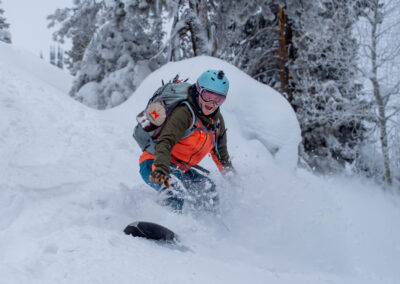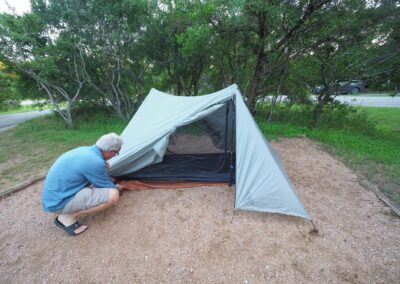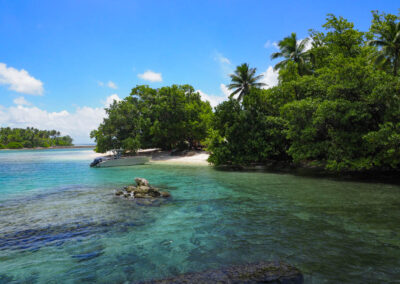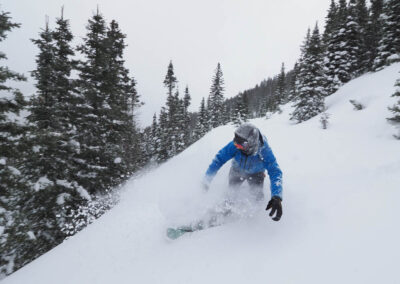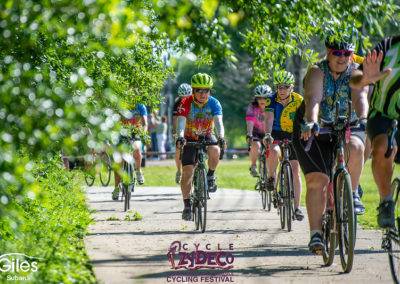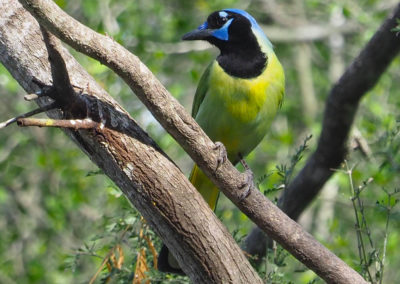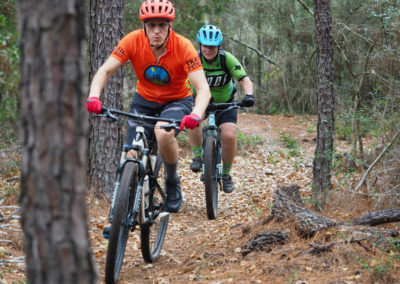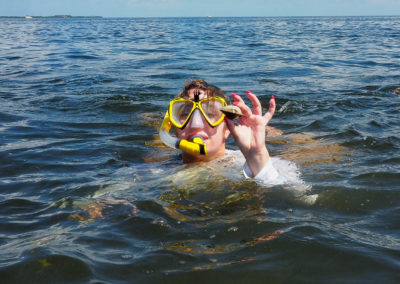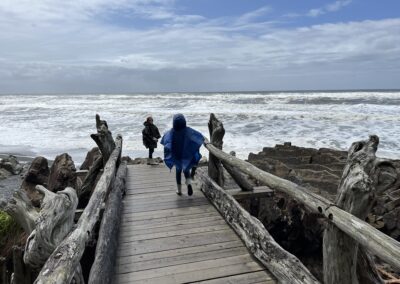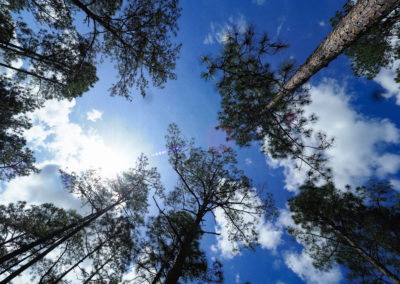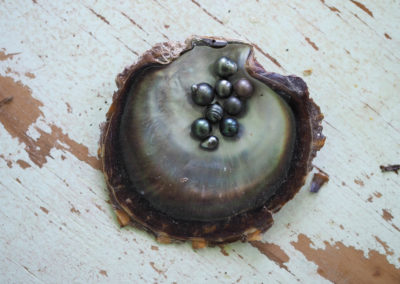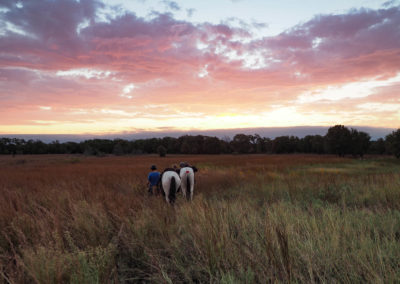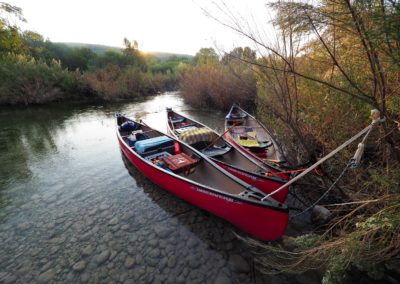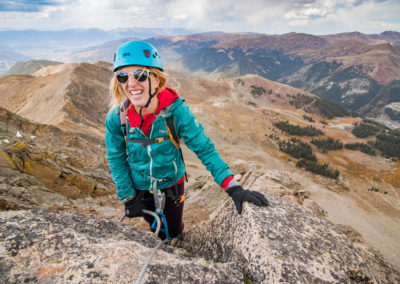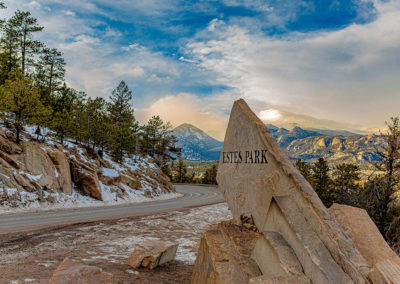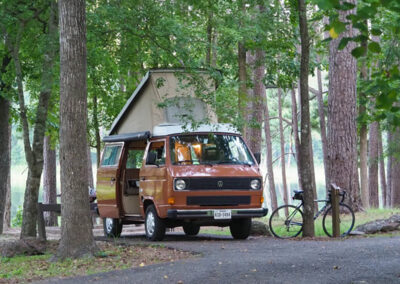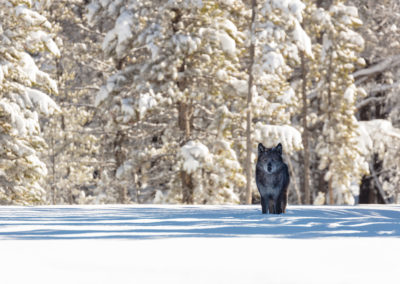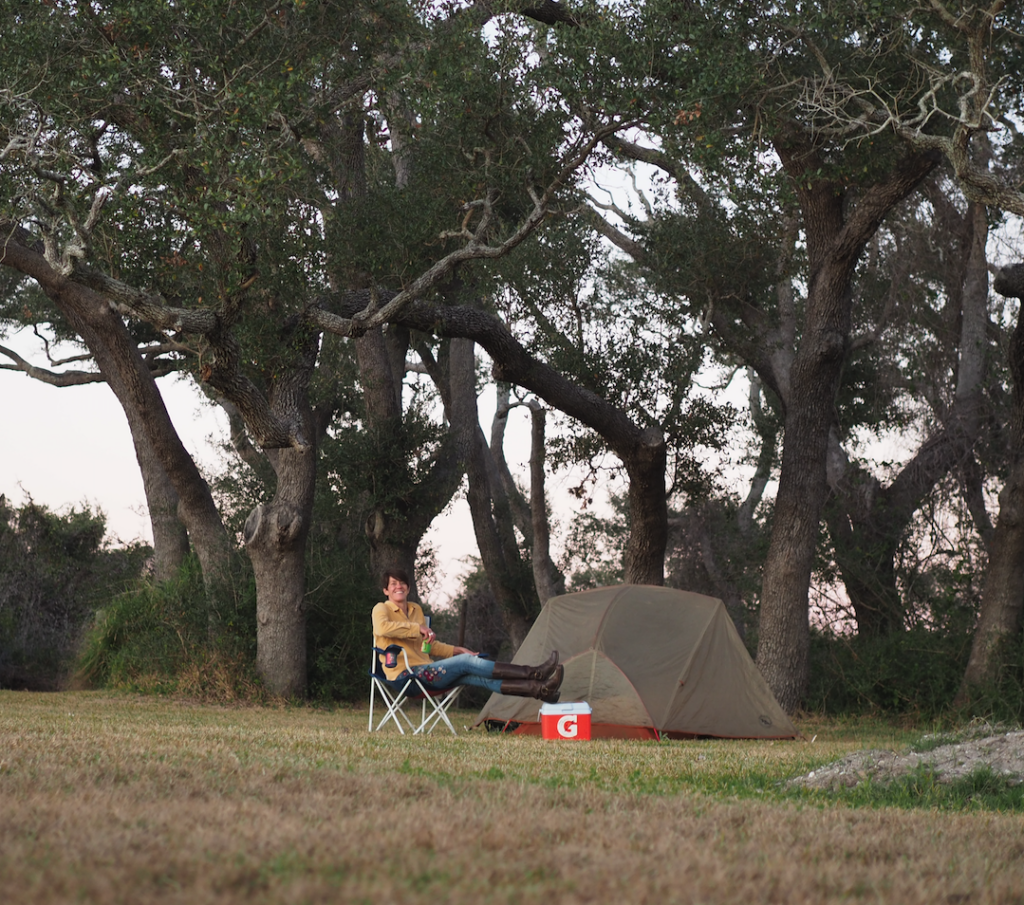
Pam LeBlanc relaxes in front of her tent at Goose Island State Park. Pam LeBlanc photo
While we wait for this blowtorch of a summer to finally wind down, it’s time to start thinking about fall camping season.
In Texas, autumn brings an end to triple-digit heat and thoughts of campfires, long hikes, and flannel shirts. We can dream, can’t we?
I’ve camped all over the state, and in the last year I discovered a few parks I’d never visited before.
Among them? Palo Pinto Mountains State Park, the newest state park in Texas, Cooper Lake State Park, where you can fish from a boardwalk in a murky swamp, and Goliad State Park & Historic Site, where every overnight stay comes with a helping of history.
RELATED: 8 Great State Parks for Camping with Kids
While Central Texas is packed with beautiful places to pitch a tent, sometimes it pays to explore new terrain. Here are a few you won’t want to miss during this fall camping season.
Palo Pinto Mountains State Park
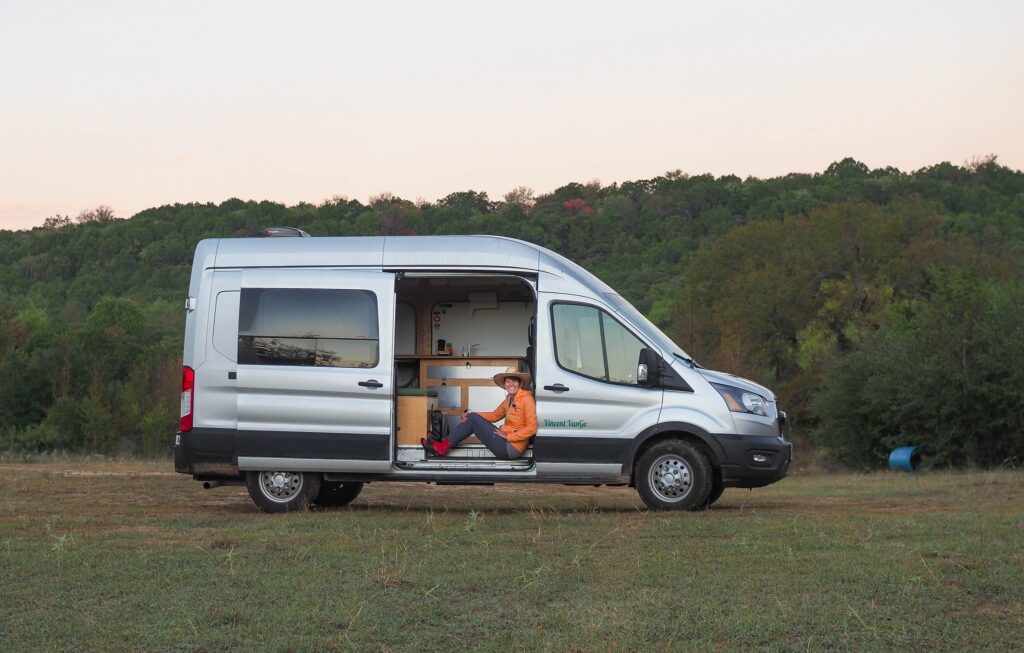
Palo Pinto Mountains State Park will open in late 2023 or early 2024. Pam LeBlanc photo
North Texas, near Strawn
Look for a soft opening of Palo Pinto Mountains, the newest state park in Texas, in the next six months.
I got a sneak peak of the 4,871-acre parcel of rolling hills last fall, when officials opened the park for a media preview. I parked my campervan in an empty field a few miles from where crews were grading roads and putting a roof on the new headquarters, and I liked what I saw.
But fair warning: To call Palo Pinto’s rolling hills “mountains,” is a stretch – they top out at 1,400 feet. That’s big compared to the flats surrounding this park, midway between Fort Worth and Abilene, but this is no Colorado.
The focal point is 90-acre Tucker Lake, which provides water for the nearby community of Strawn. When the park opens, you’ll be able to fish, swim and paddle there, and explore a twisting creek that feeds into it.
Most campsites are located high on a bluff overlooking the creek, tucked among junipers and mesquite. But a separate camping area designed for equestrians occupies lower, flatter ground.
Native tribes once roamed the area, and in the 1950s residents leased land around the lake for fishing camps. Those camps have since been torn down, but the fishing still promises to be good.
Related: Central Texas Camping Guide
Another reason to go? Nearby Strawn is home to Mary’s Café, which always pops up on lists of the best chicken-fried steak in Texas. It’s griddle cooked, not deep fried.
Cooper Lake State Park
Northeast Texas, near Commerce
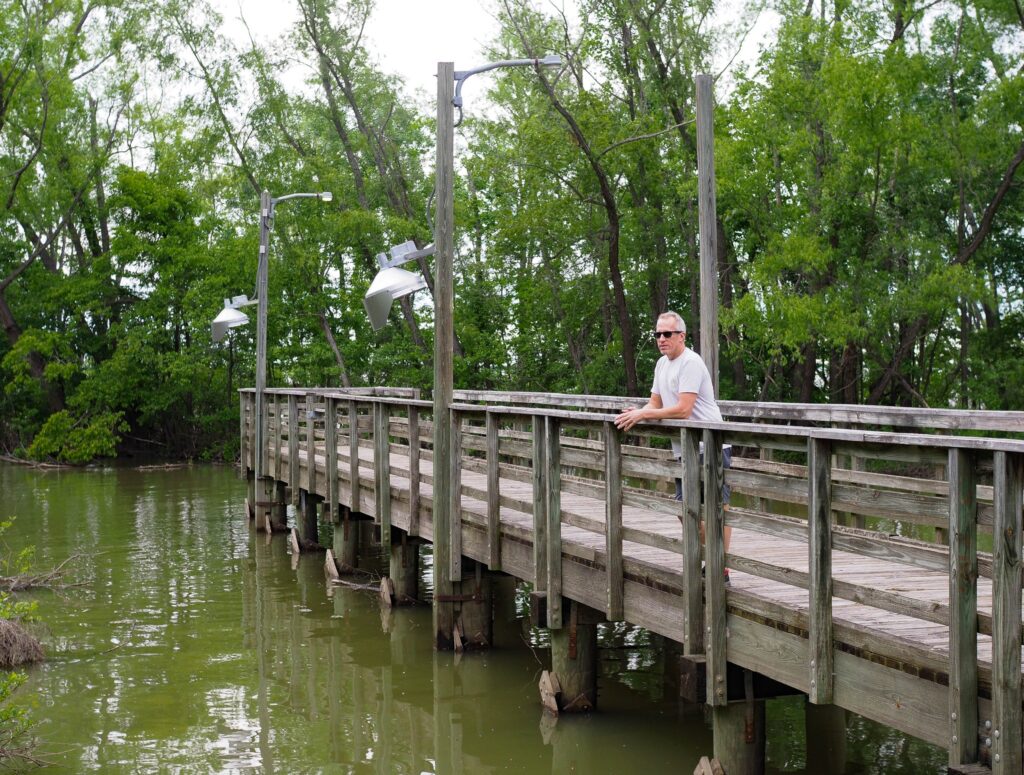
Anglers can cast a line from a boardwalk at Cooper Lake State Park. Pam LeBlanc photo
Two separate units – the South Sulphur Unit and Doctors Creek Unit –- make up this park, which straddles a lake popular with boaters, anglers, and swimmers.
We opted for the larger South Sulphur Unit and pulled into a woodsy campsite on the Deer Haven loop. From there, we could walk (or hobble on crutches as I did, after tearing my ACL), to a boardwalk over a boggy area.
I got distracted by a non-venomous snake as thick as my arm curled on a floating log, but I hear the fishing’s good.
More ambulatory visitors can take advantage of the park’s trail system, which includes a 4.8-mile Lonesome Dove Loop, which winds past a pond and chugs up a few challenging hills.
We camped at the park in March, before summer’s big crowds of boaters arrived. I plan to return next spring.
Goliad State Park & Historic Site
Southeast Texas, near Goliad

Visit Goliad State Park during fall camping season and tour a restored Spanish mission. Pam LeBlanc photo
Spaniards built Mission Espiritu Santo in 1722 and used it as a home base as they converted native Karankawa tribes to Christianity.
The mission eventually fell into disrepair, its stones repurposed to construct buildings in the nearby city of Goliad. But in the 1930s, the Civilian Conservation Corps used some artistic license and restored the mission, which remains open to visitors today.
I spent a night at the park in my campervan in April, when blue, purple and yellow wildflowers bloomed everywhere. The main Karankawa camping area was full. I wound up in the Jacales section, which felt more like a giant gravel parking pad with marked slots for campers along its edges. Luckily, I nabbed a spot on the far end, where I found some privacy.
The Longhorn and Vaquero tent camping areas along the river are quiet and secluded, and if you’re into paddling like I am, make a good spot for launching. Birding is also good.
Sea Rim State Park
Near Port Arthur in Southeast Texas

Camp on a floating platform at Sea Rim State Park. Pam LeBlanc photo
Last fall, I logged my first night in what is perhaps the Lone Star State’s only floating campsite open to the public. Fall camping season is the perfect time to experience it.
Architecture students at the University of Texas designed the 13- by -20-foot platform, which bobs in waist-deep water in a marsh on the inland side of the park.
You’ll need a canoe or kayak to get there, and you can either rent one from park headquarters or check one out from a kayak “vending machine” located by the boat ramp.
I loaded my tent, a required 5-gallon waste bucket (sold at park headquarters), a sleeping pad and some food for the hour-long paddle to the site. You can’t get lost if you follow the channel cut into tall grass. Just take a left at the fork, then look for the tall wooden tower.
Keep an eye out for alligators. They’re unlikely to bother you but stay a respectful distance away. Mosquitos are more likely to be a problem, so come armed with insect repellent. And prepared to enjoy the morning sunrise.
Goose Island State Park
Southeast Texas, near Rockport
Hurricane Harvey delivered a powerful punch to this coastal park in 2017, but after extensive repairs and restorations, it’s back in working order.
At one end, you’ll find the famous Big Tree, a sprawling, centuries-old oak with a trunk that measures a whopping 35 feet around. At the other end, a row of bayfront campsites with covered picnic tables are lined up on a small island. (Beware sharp oyster shells, which make it tricky to swim.)
In between you’ll find the central campground, tucked in a forest of live oaks. The Lantana Loop features campsites with hookups. I prefer Liveoak Circle, with its groves of twisted trees that seem made for hanging by your knees. It’s perfect for tent camping.
Paddlers can rent a kayak from a kiosk, anglers can cast a line from a 1,620-foot pier (red drum, speckled trout and flounder are common), and wildlife watchers can hike a short nature trail or join an organized bird walk.













